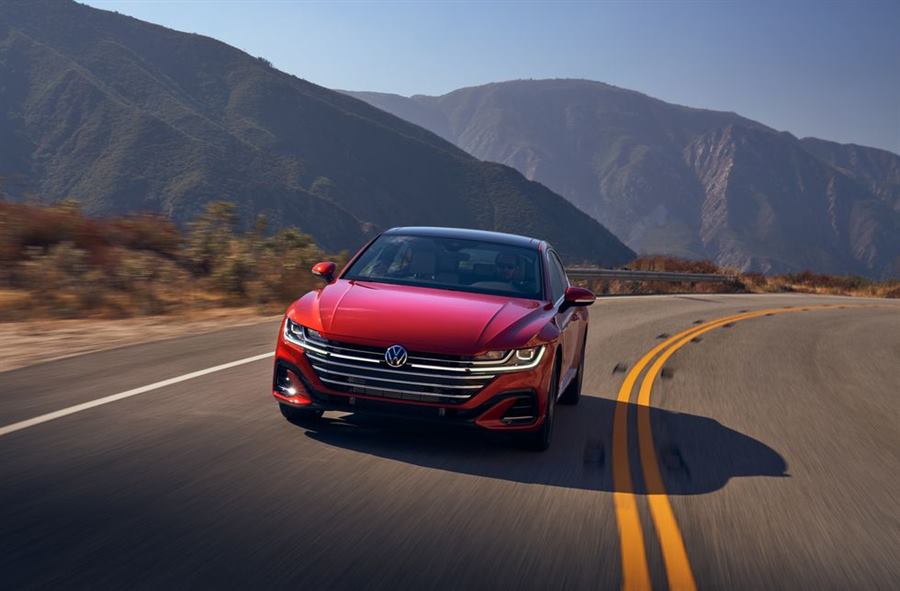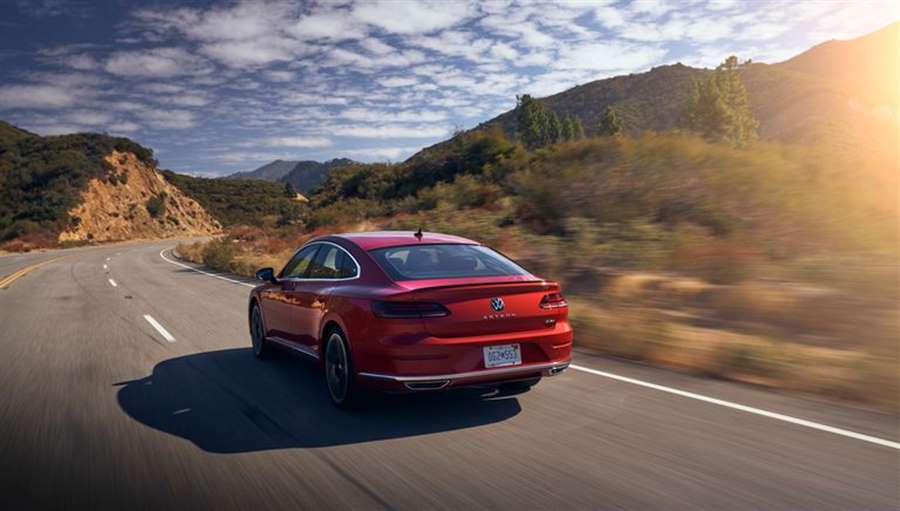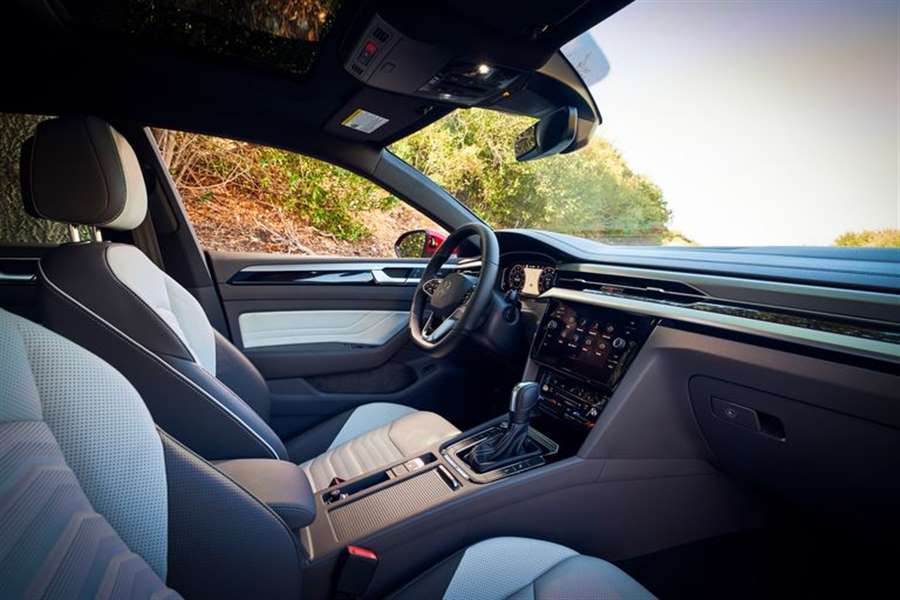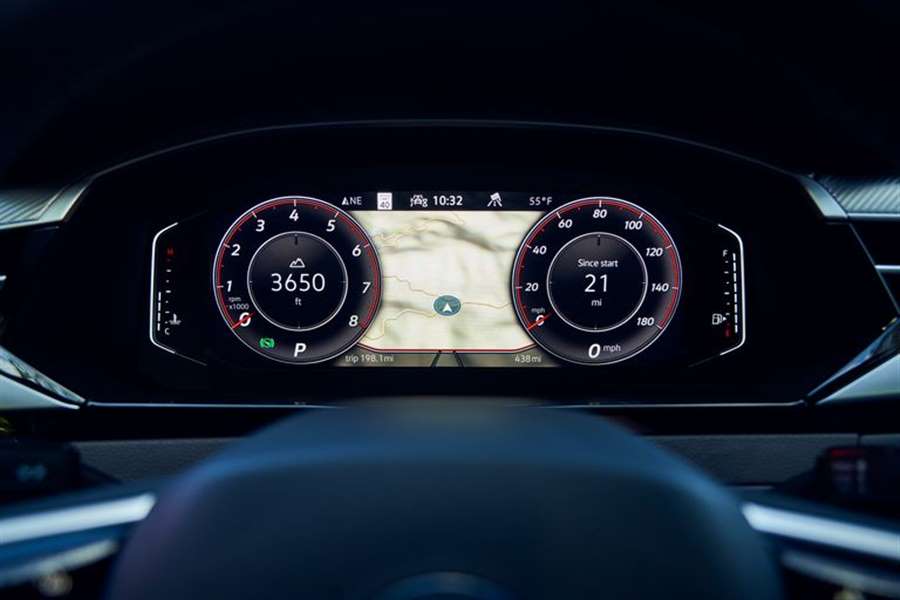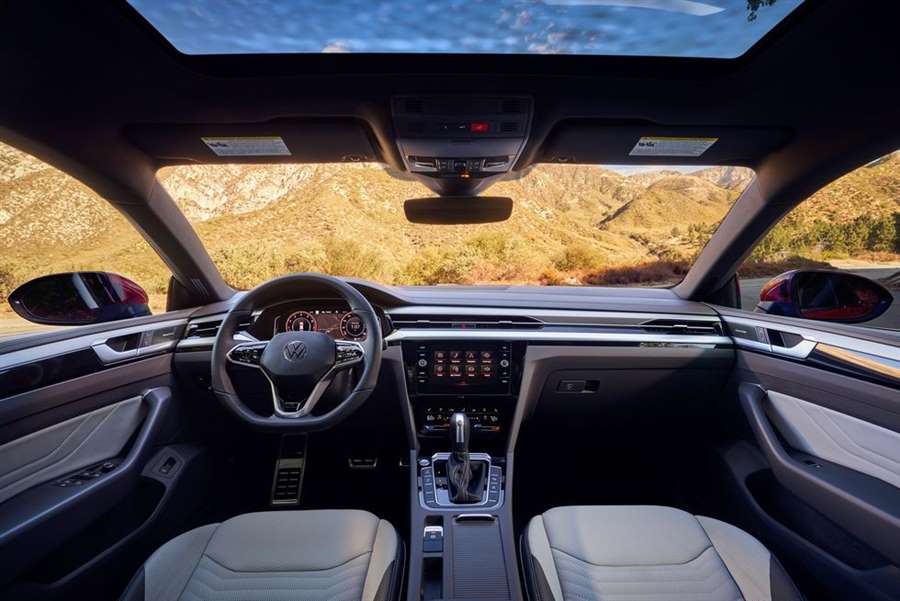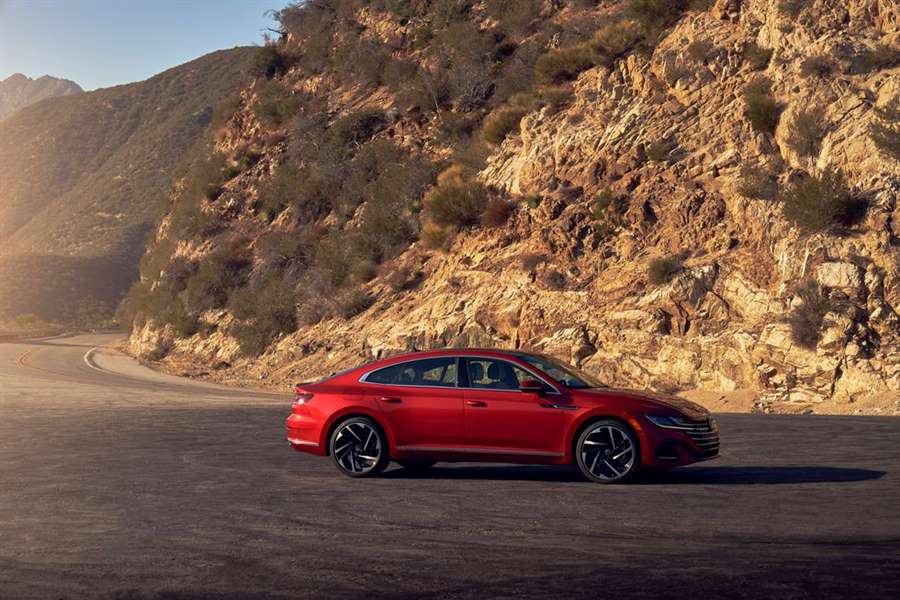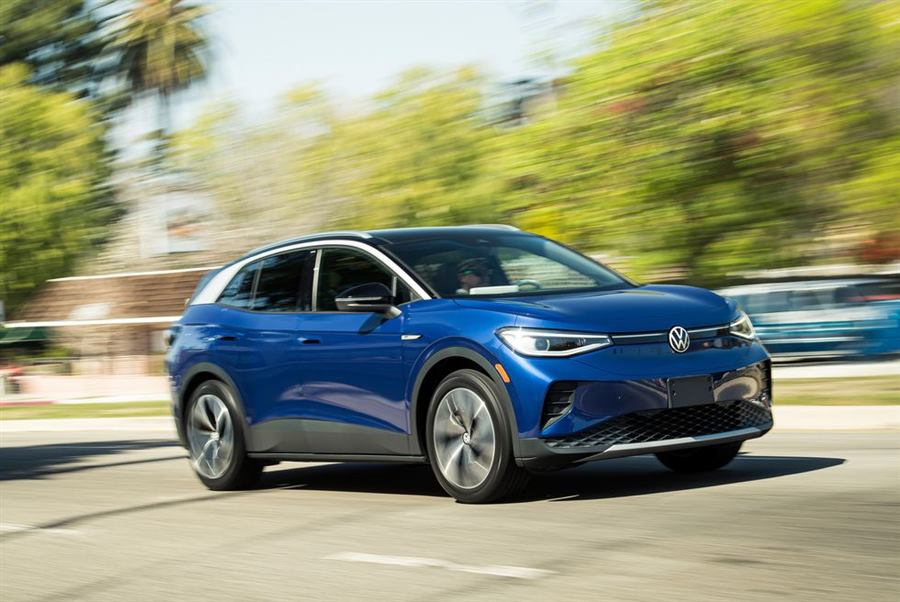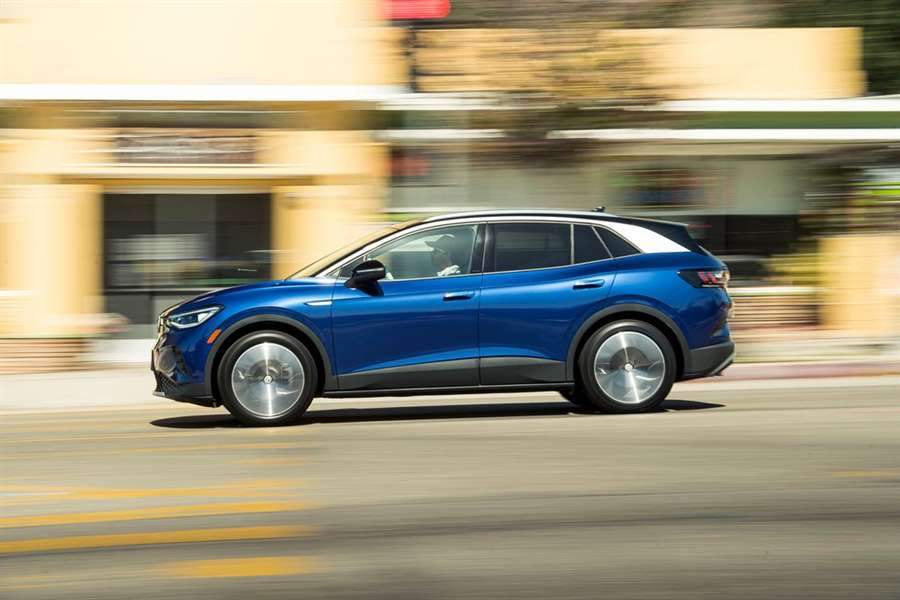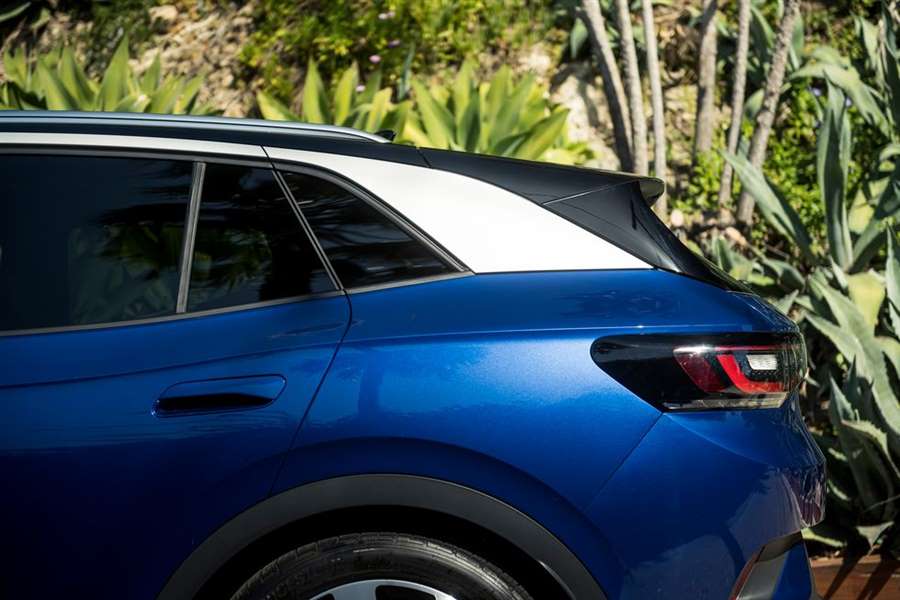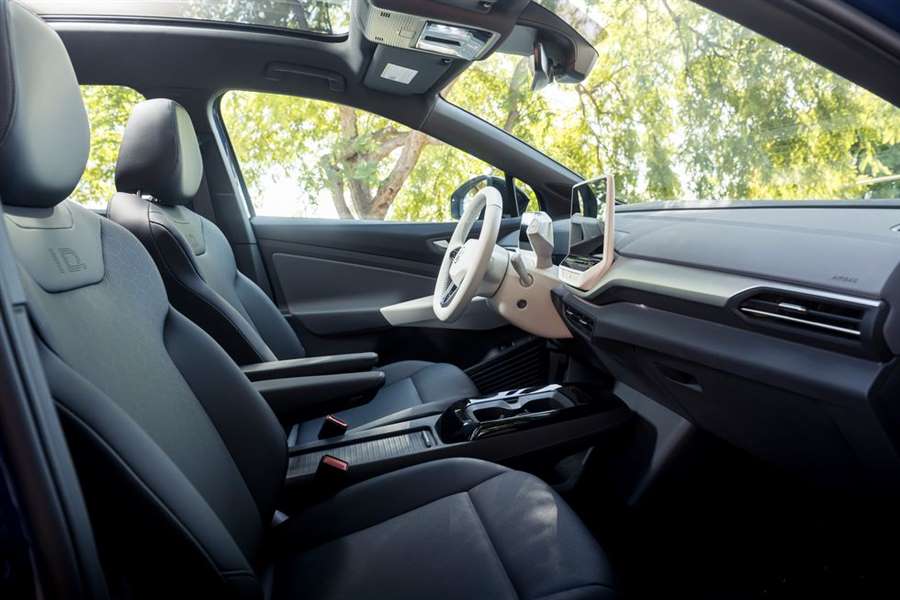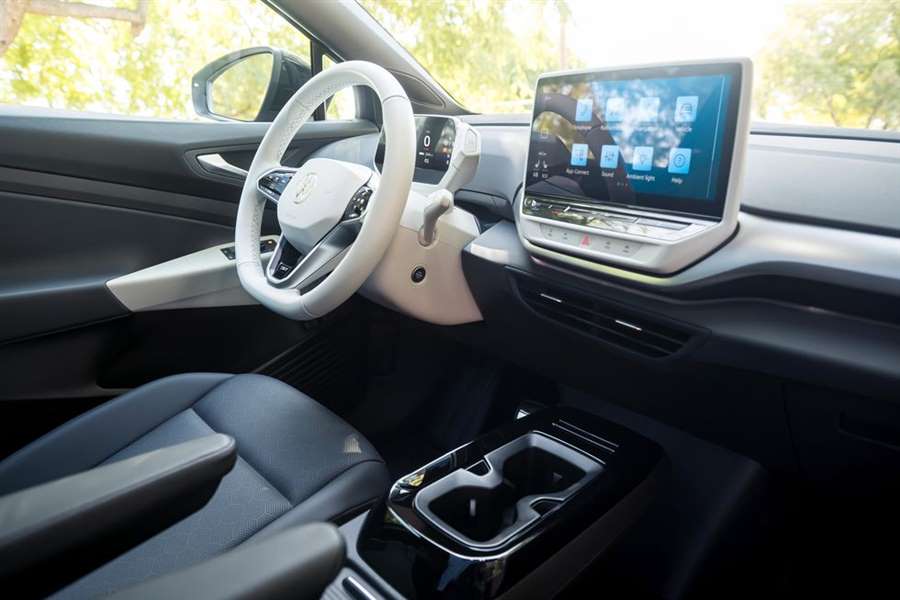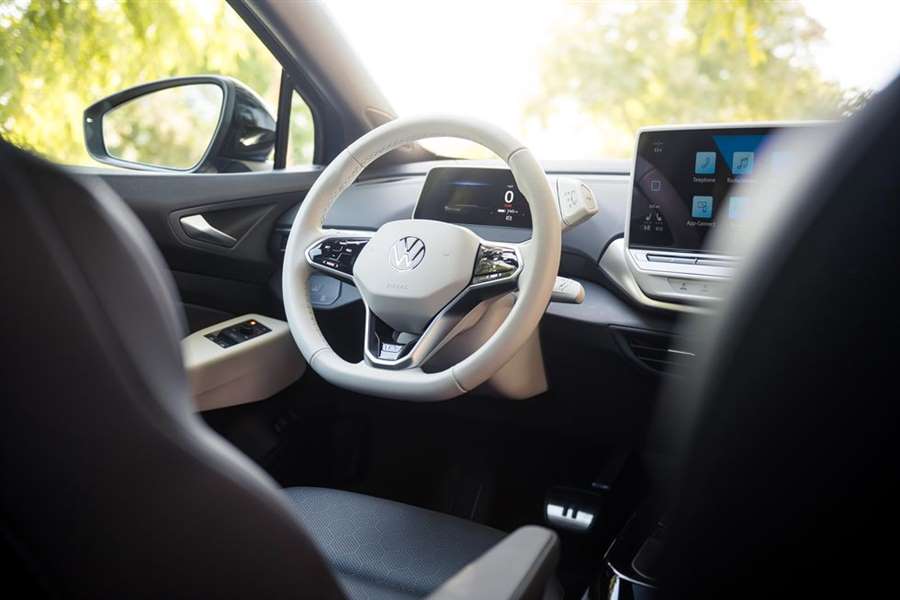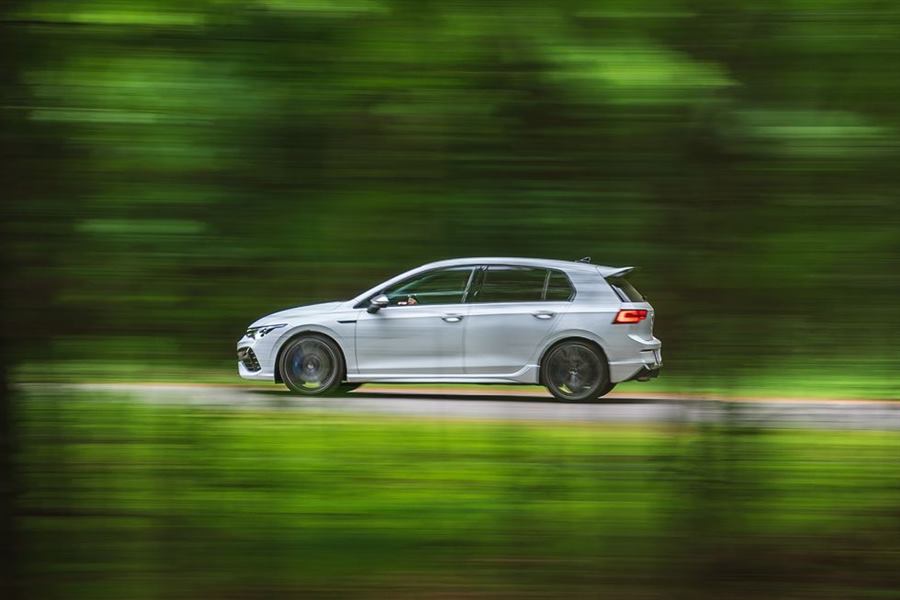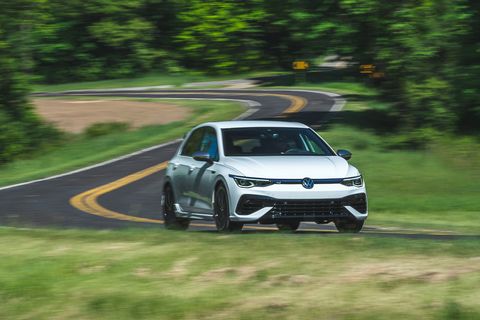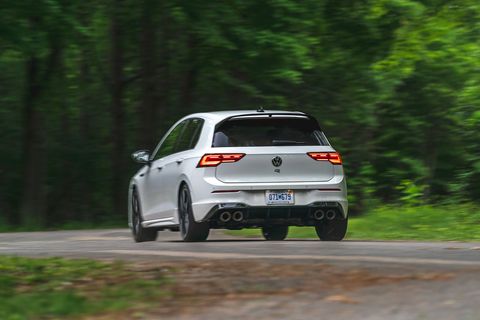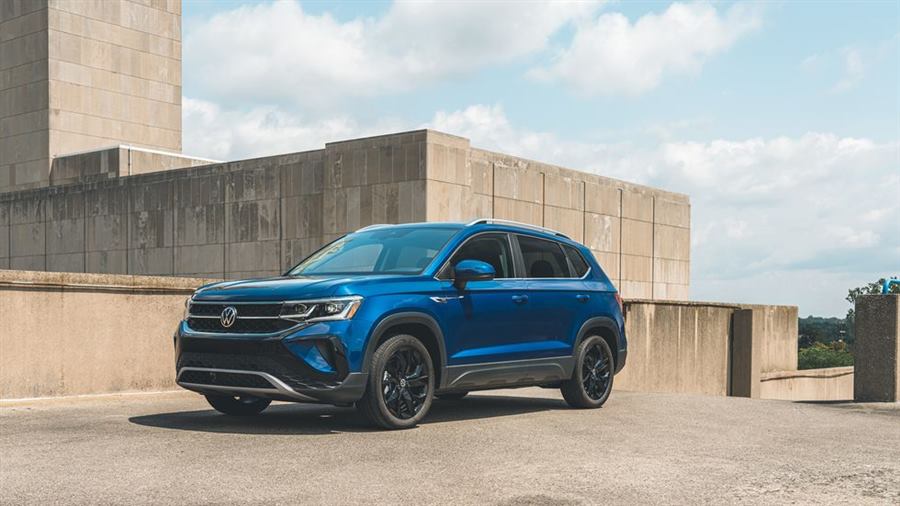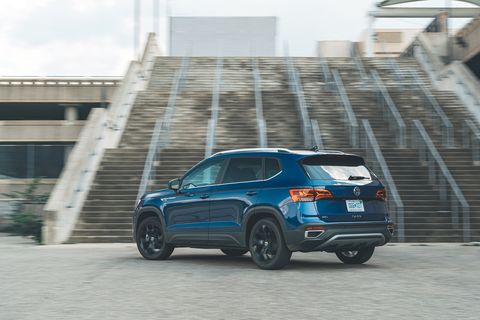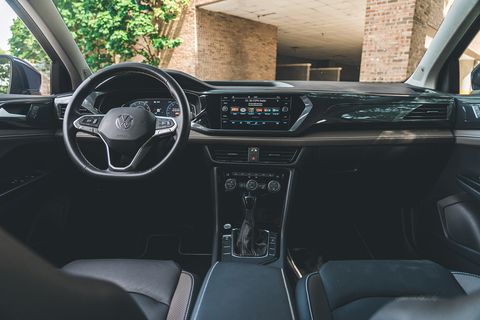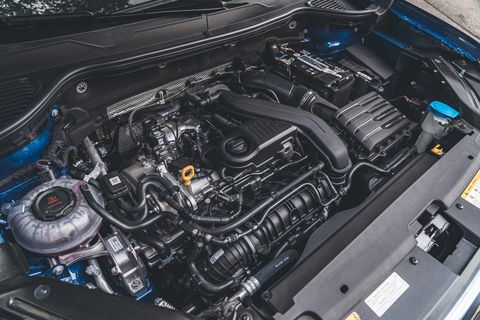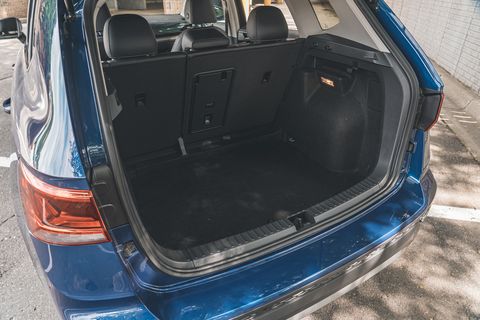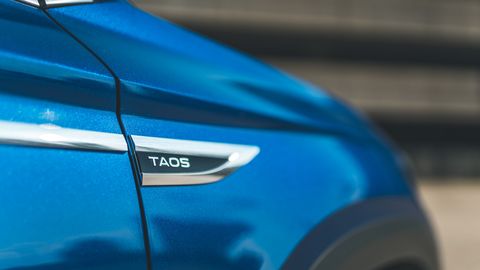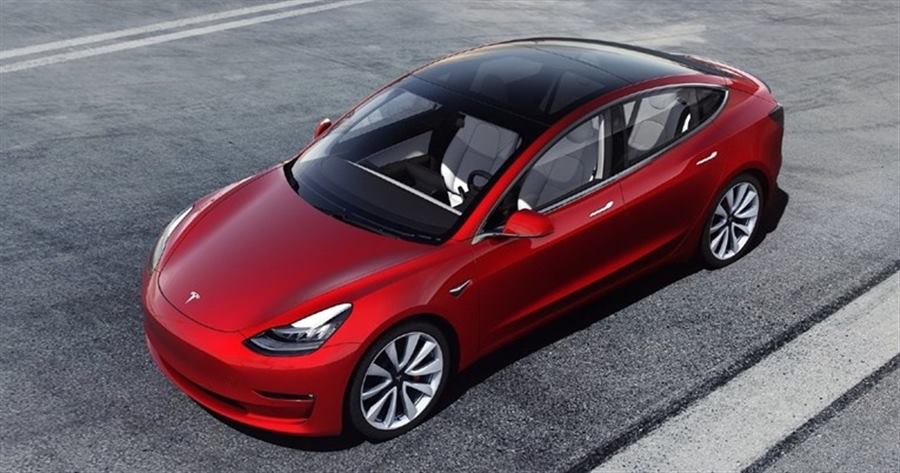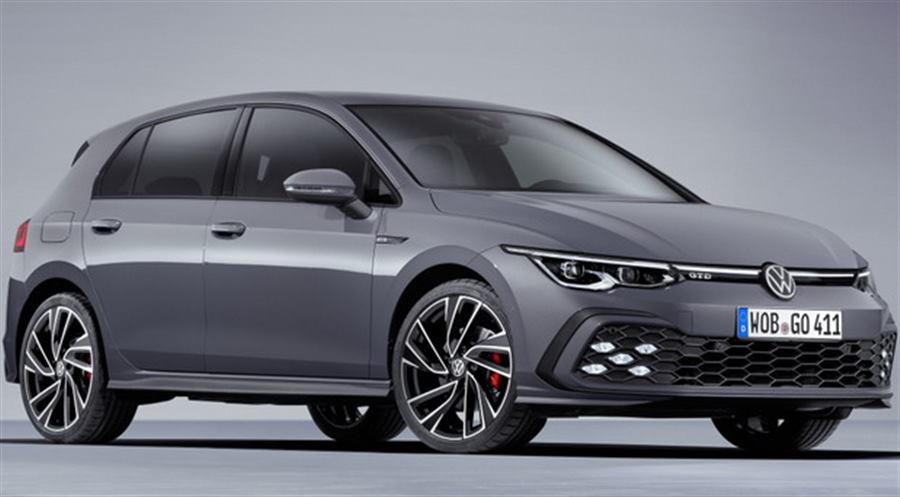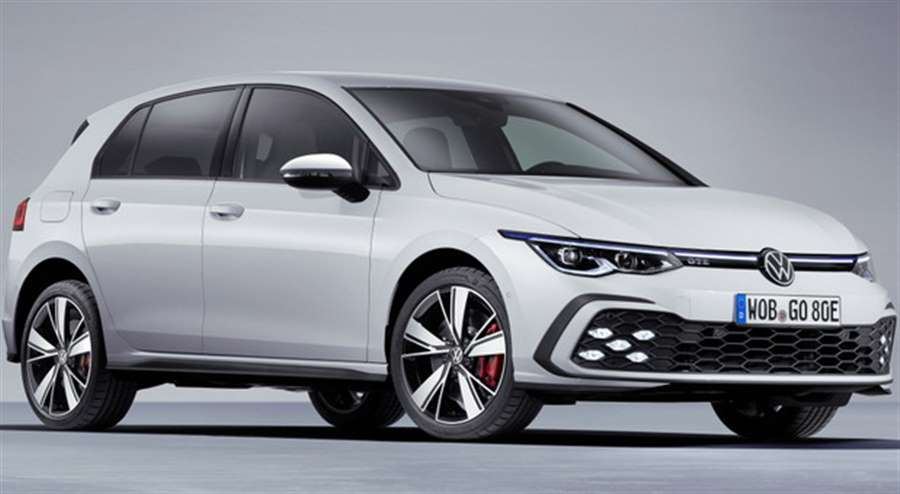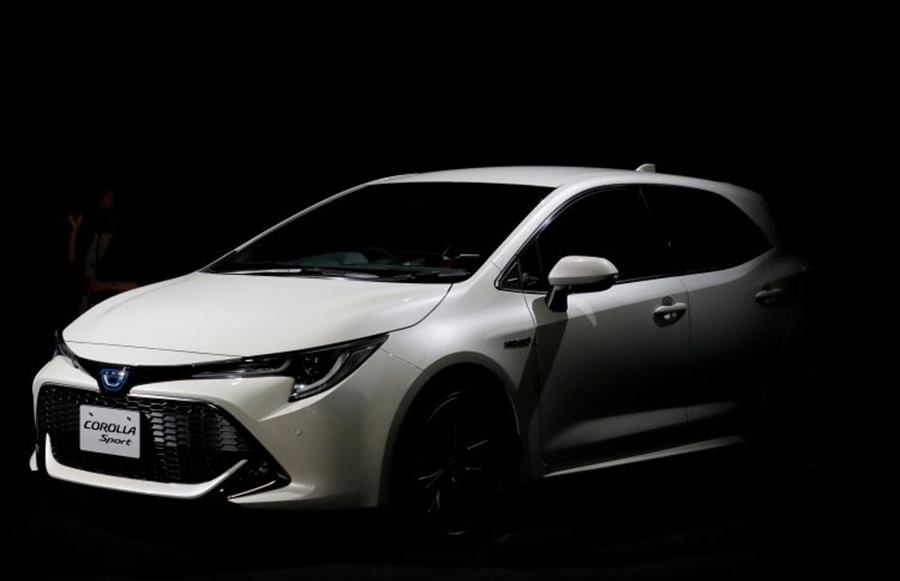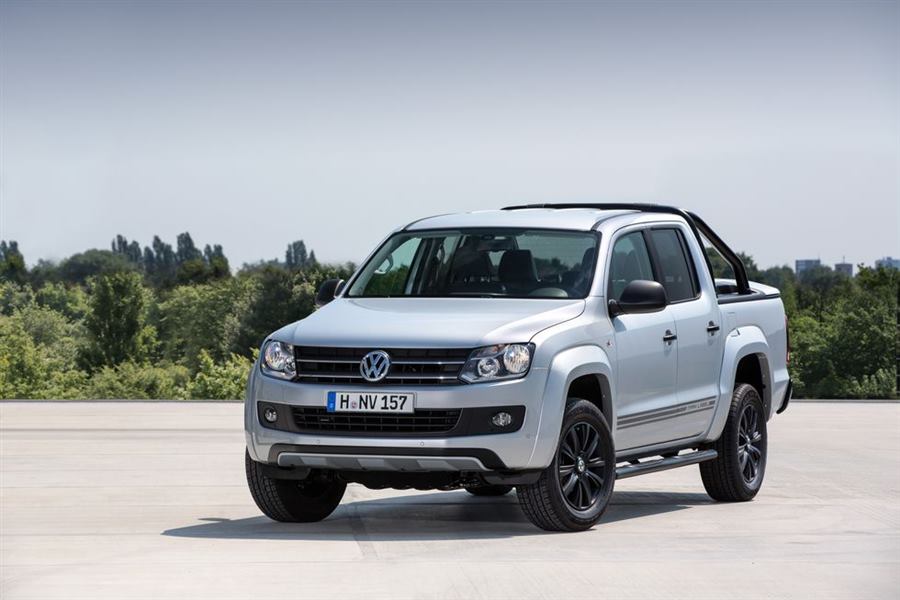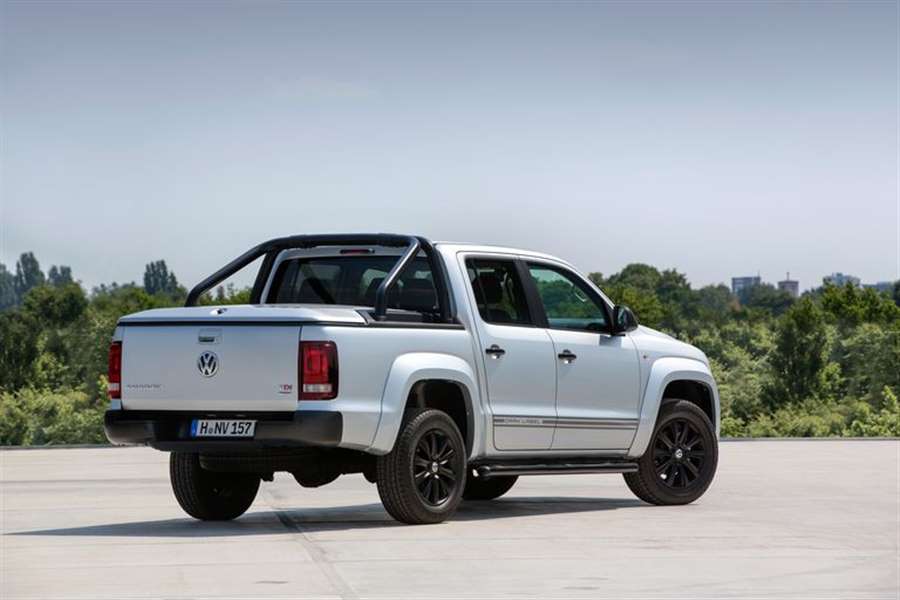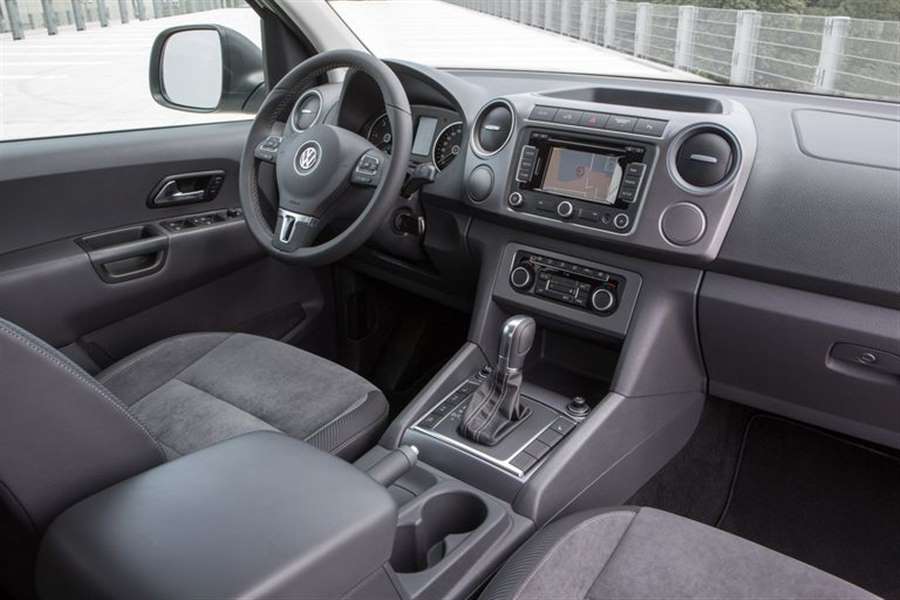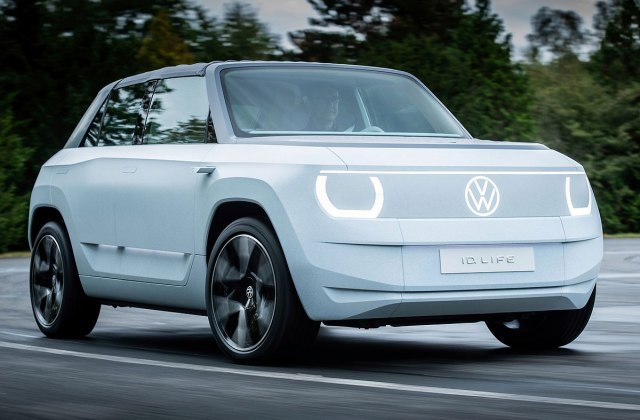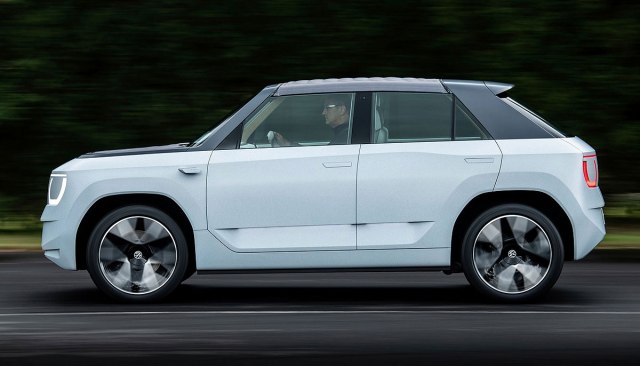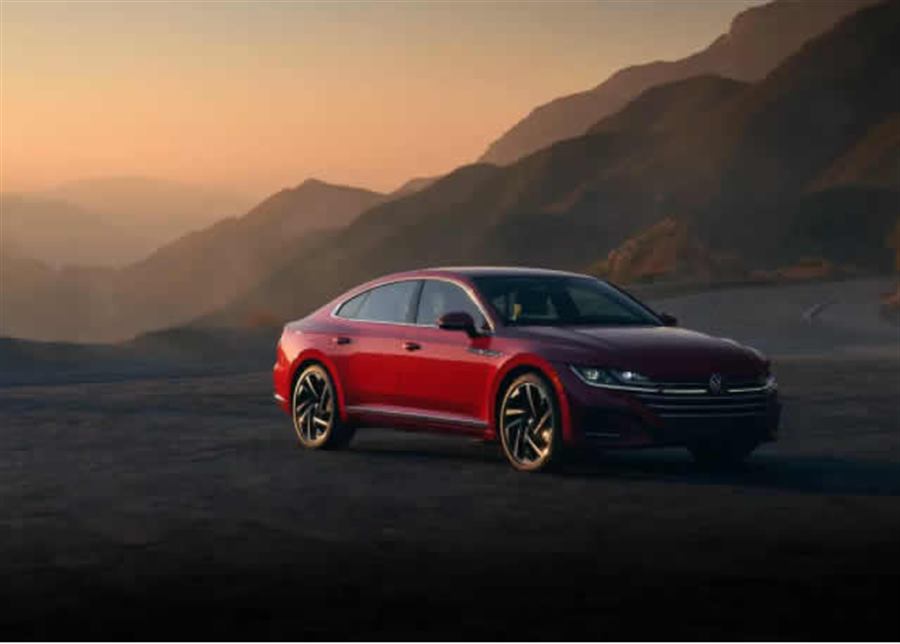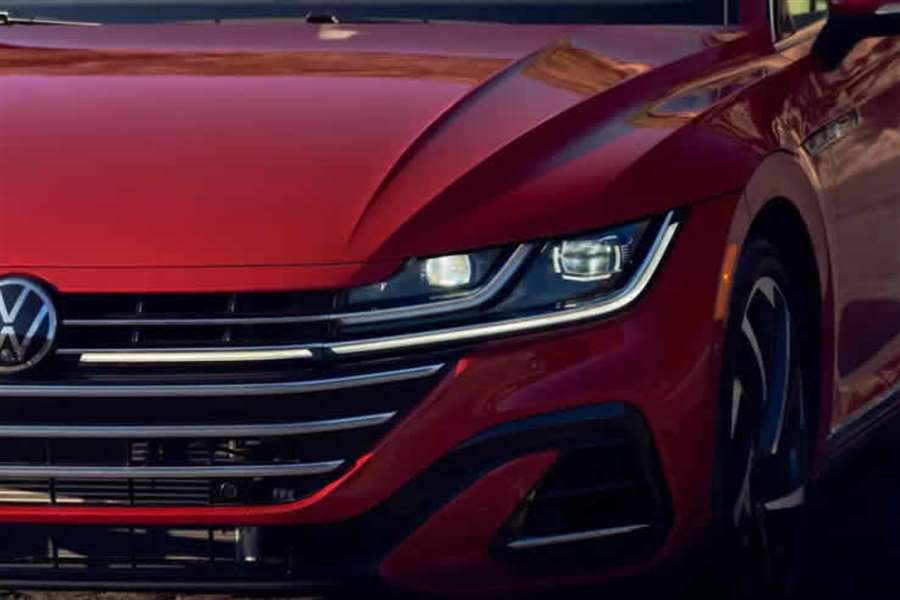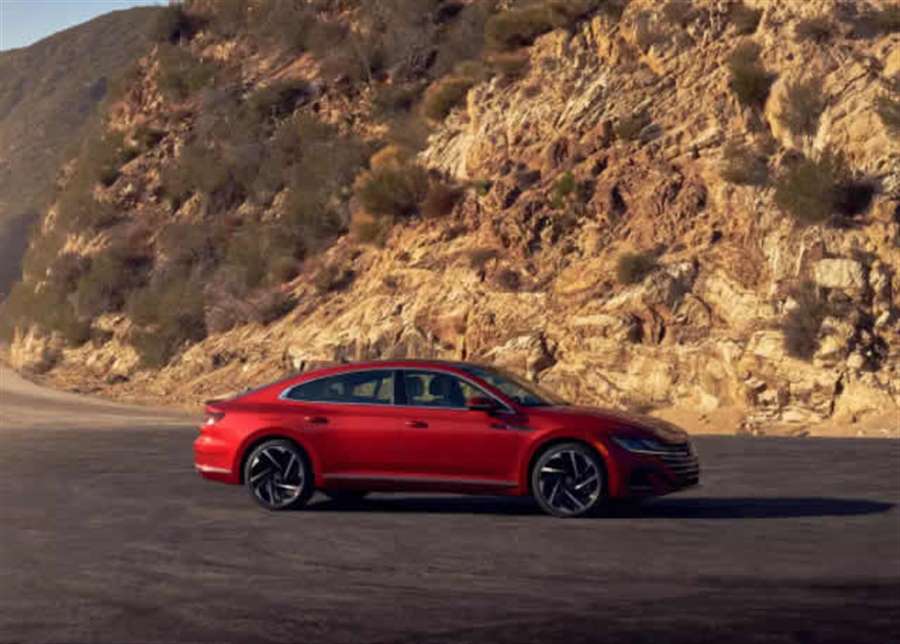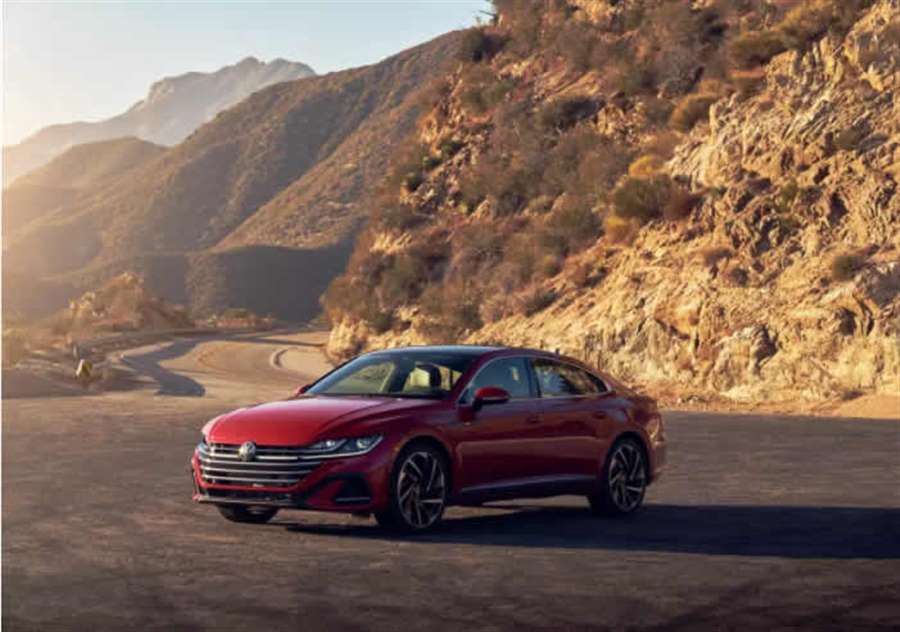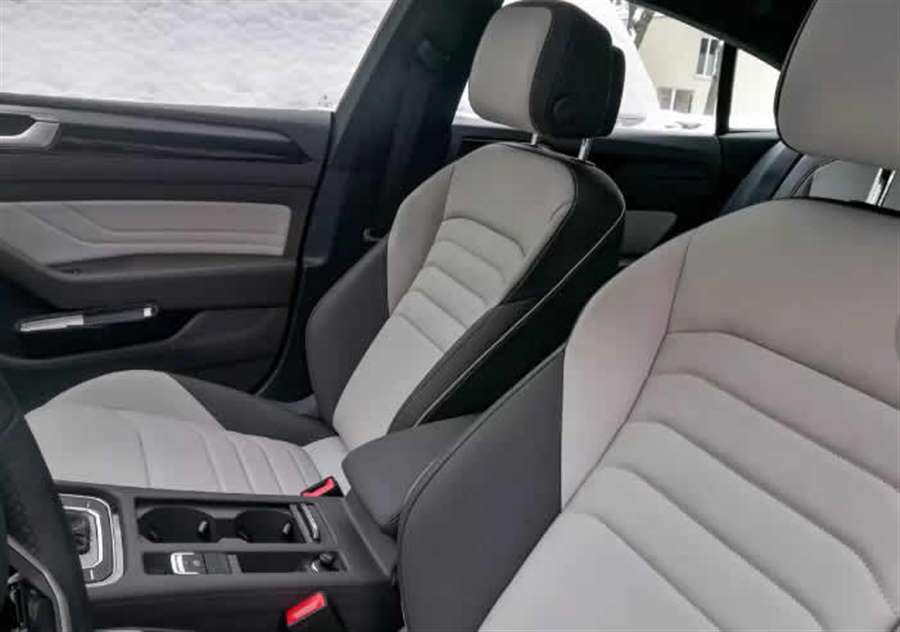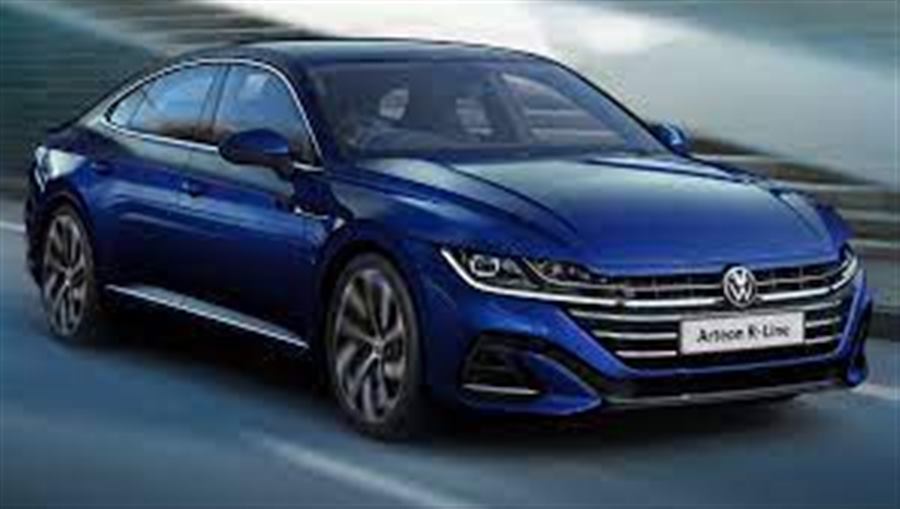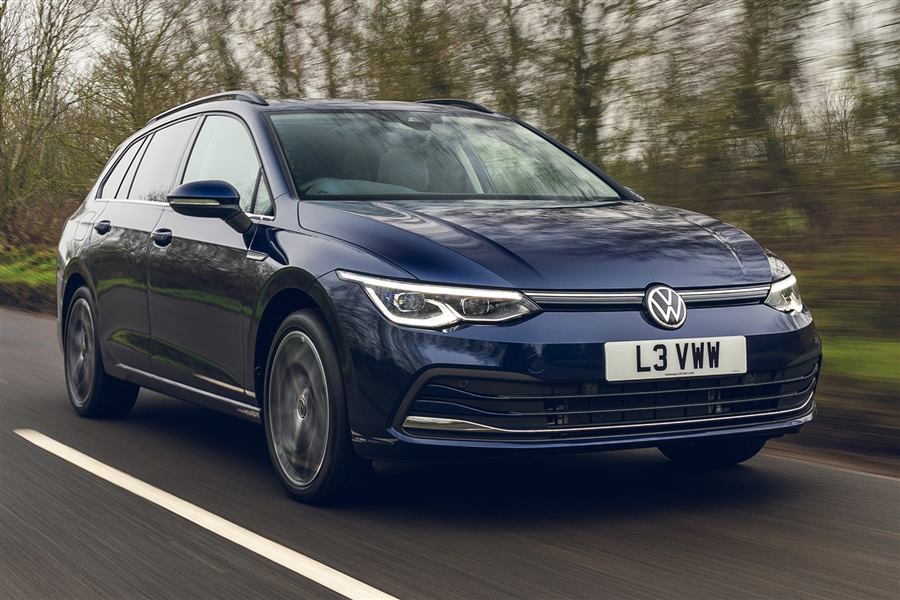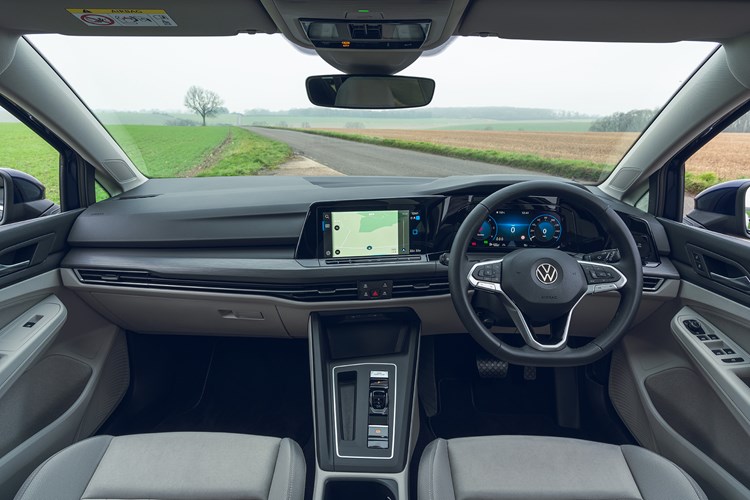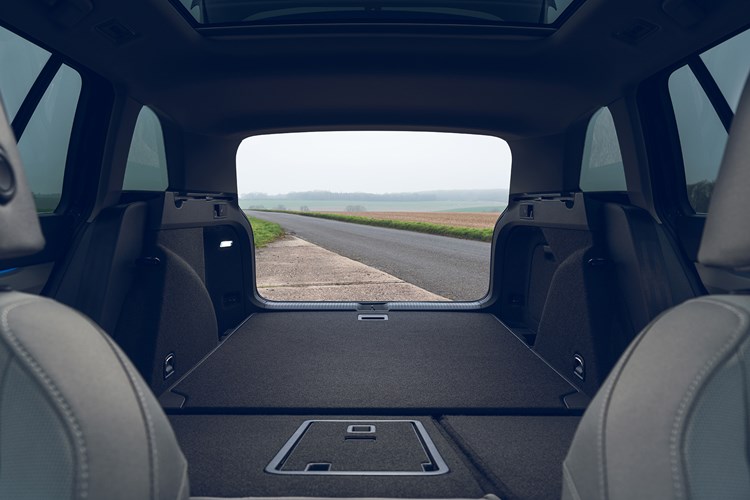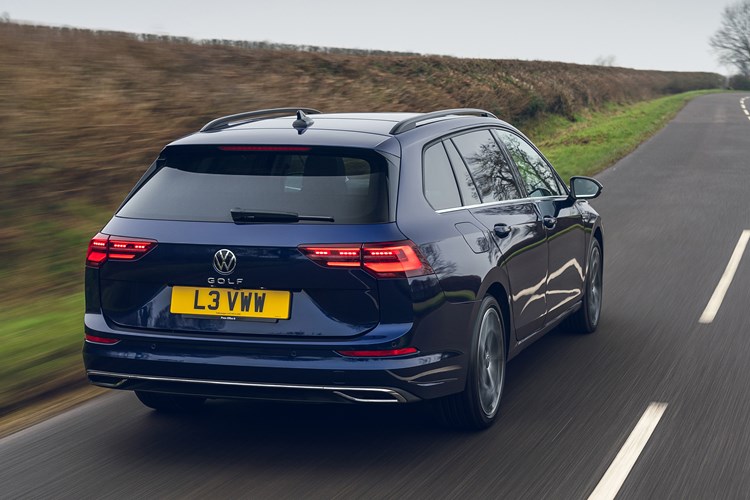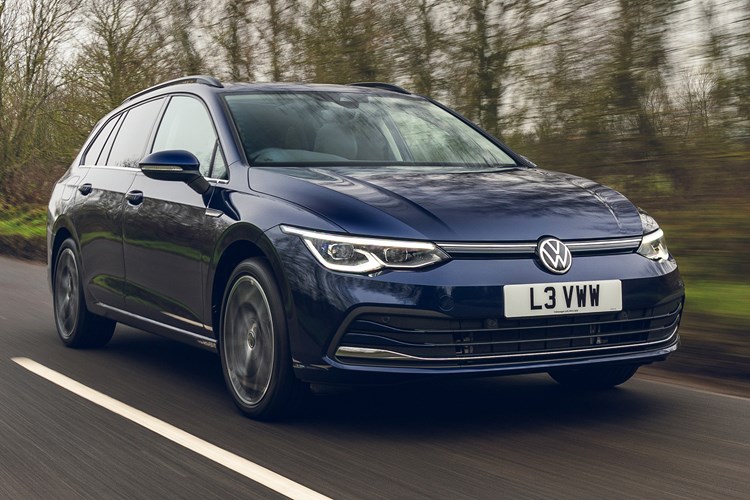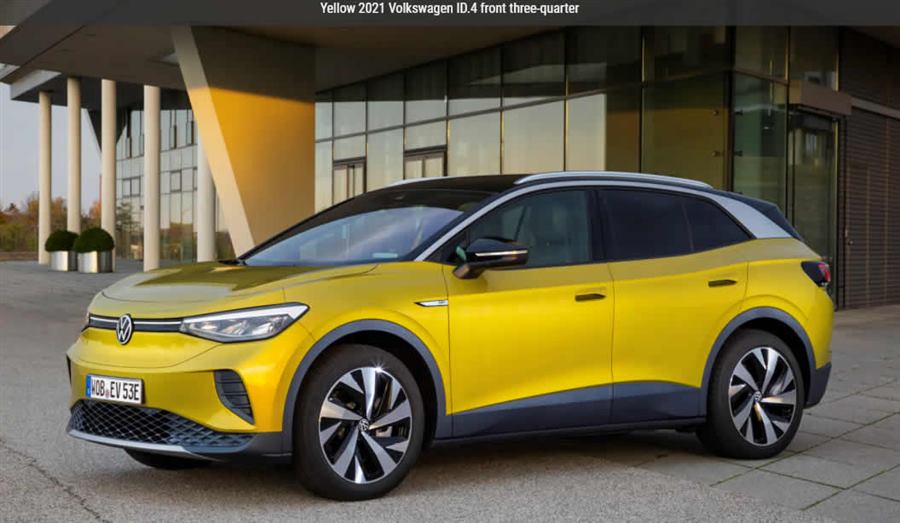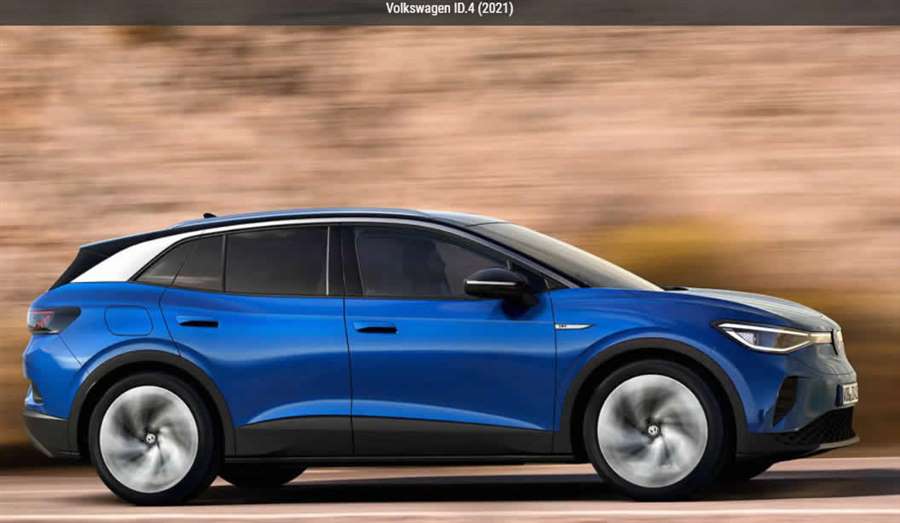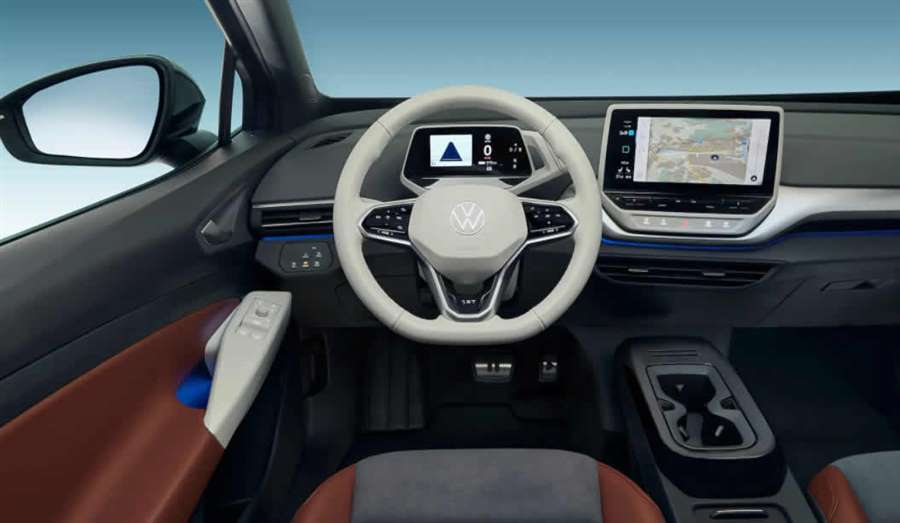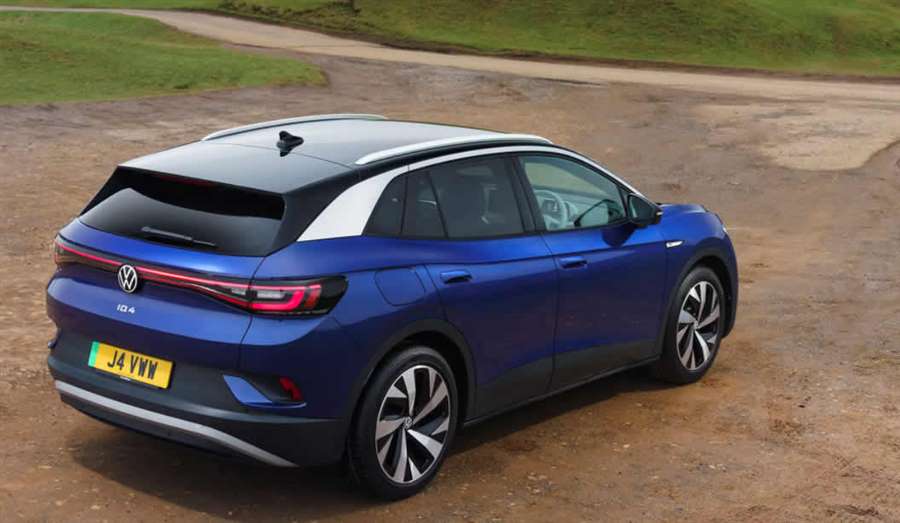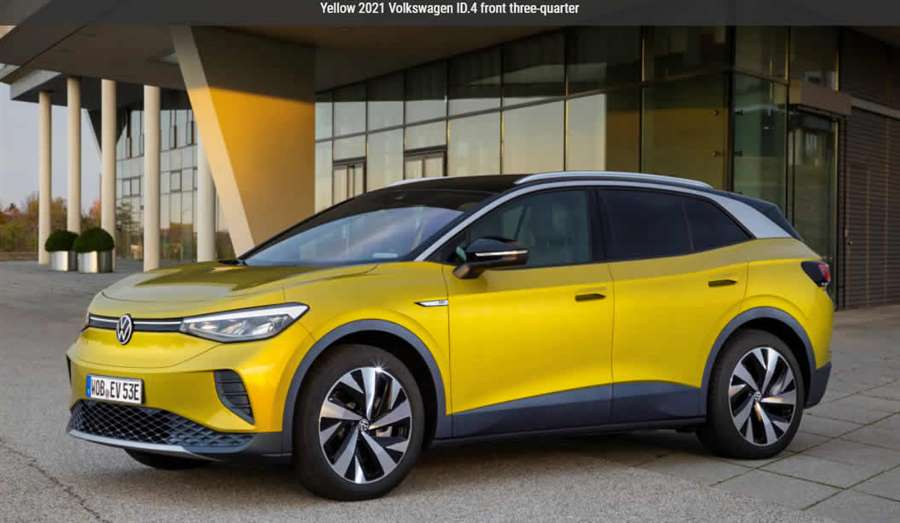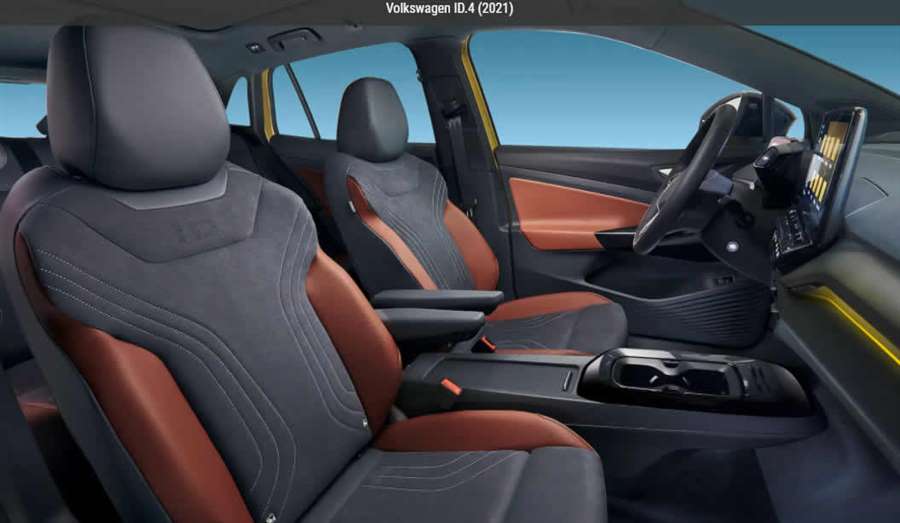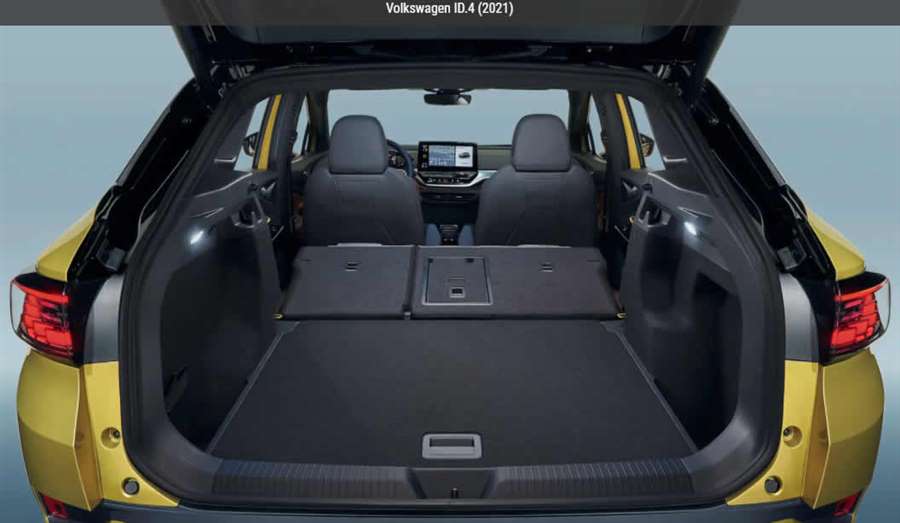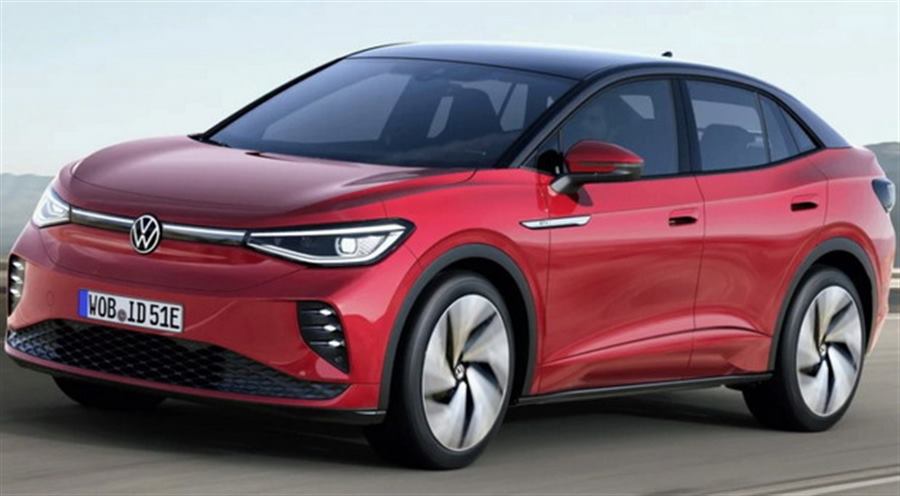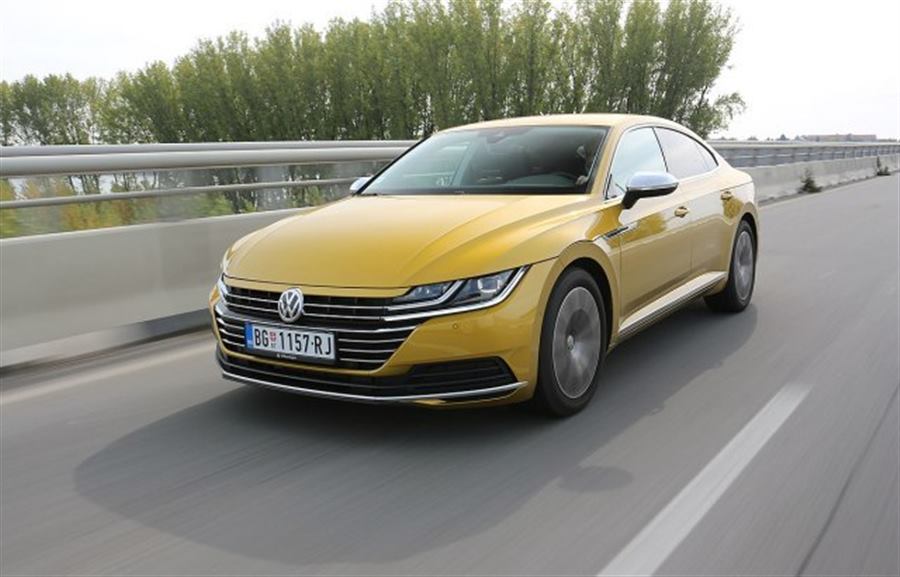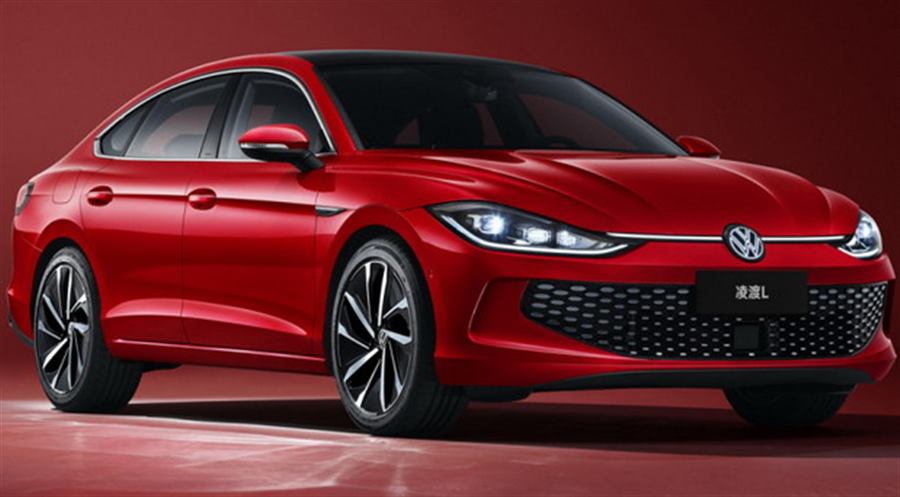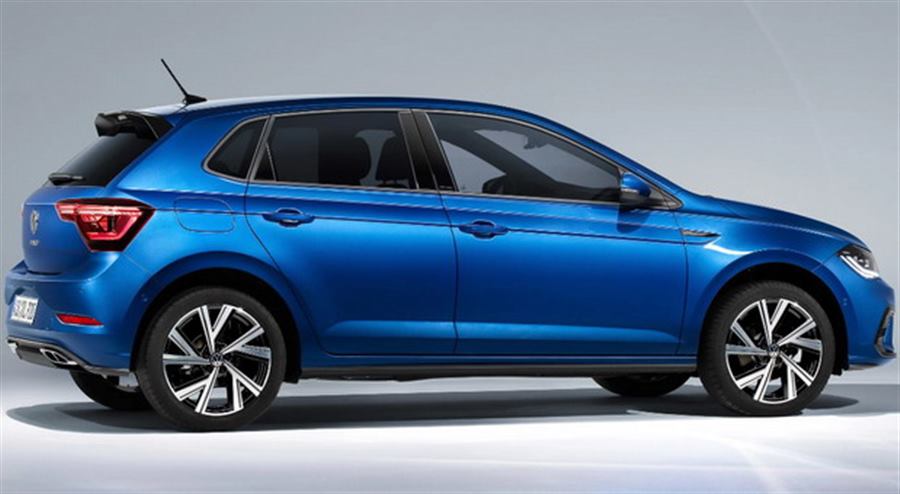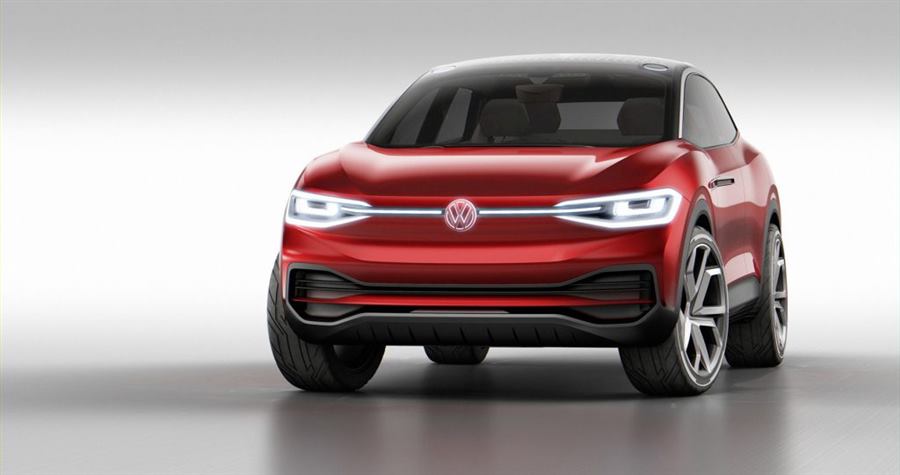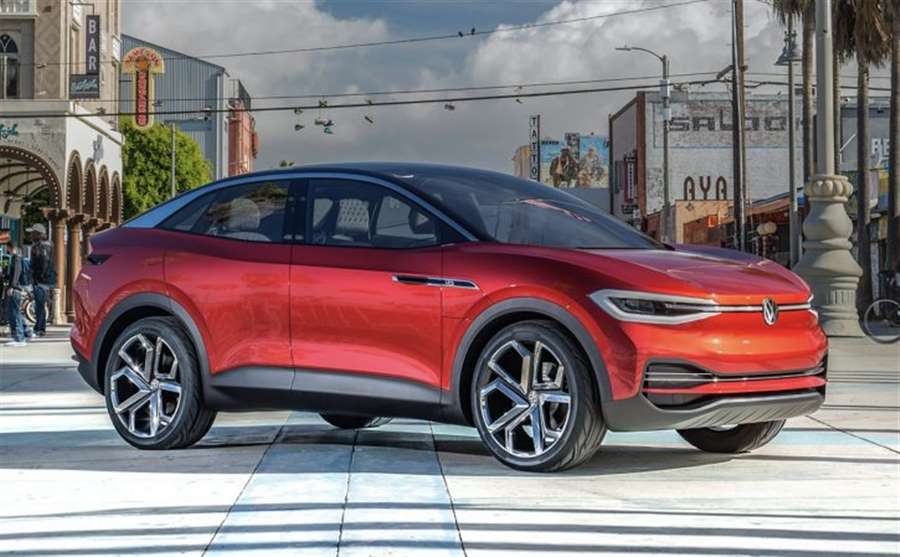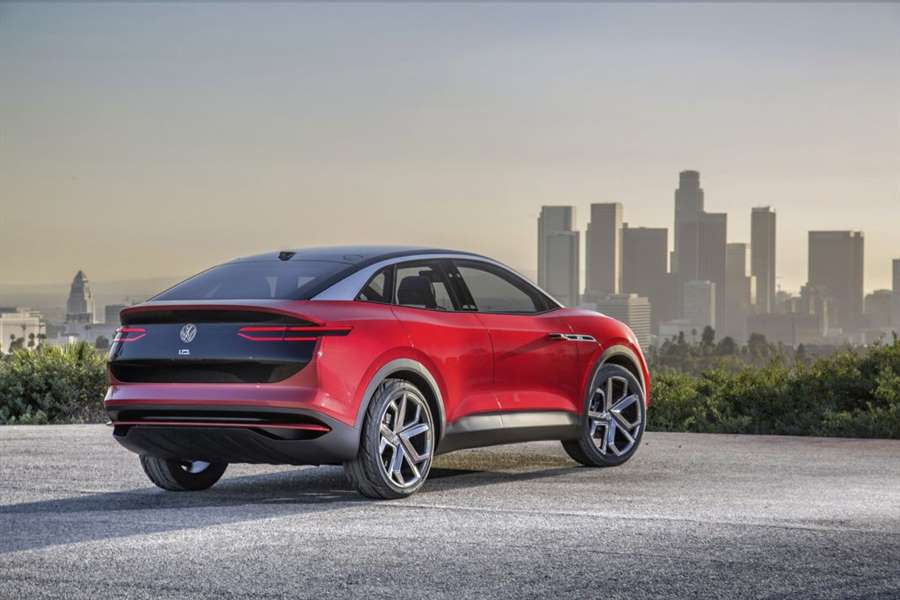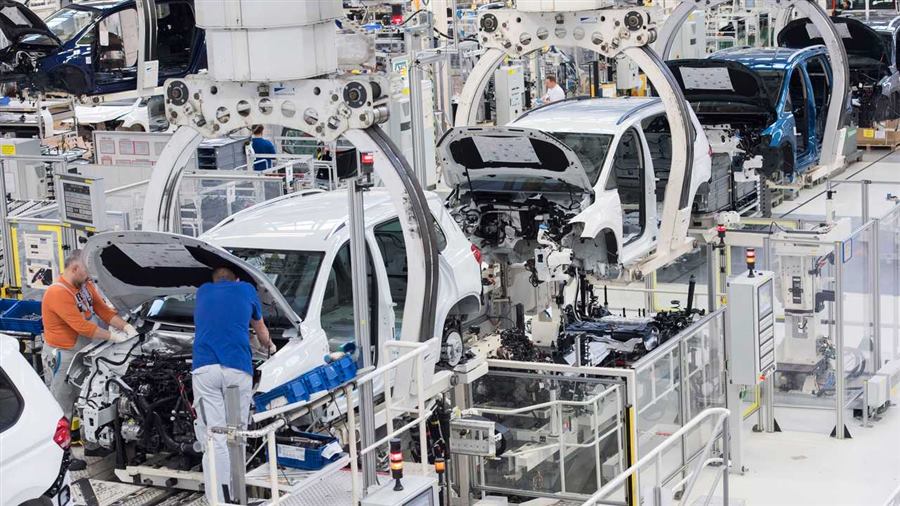Whatever you do, don’t call the Volkswagen Arteon Shooting Brake an estate. Although it has a longer, taller roofline than its coupe sibling to give more load space, it sacrifices a little practicality for a bit more style.
If the term Shooting Brake has you scratching your head, think of classics such as the Reliant Scimitar GTE and Volvo P1800 ES, both of which followed the same formula. However, while they only had a pair of doors and a tailgate, the Arteon Shooting Brake has four usefully large doors to make accessing the rear seats a cinch.
As you’d expect from something designed to be desirable, it takes only the more powerful engines from the Passat on which it’s based. That means a bare minimum of 150hp, a punchy plug-in hybrid and even a hot 320hp R version.
What's it like inside?
The Arteon fastback received an update in 2021, and the Shooting Brake has all of these revisions from the off. The overall design of the interior has been refined over the outgoing model, with an updated infotainment set-up and revised controls. If it looks and feels familiar in here, it's because it's closely based on the Volkswagen Passat's interior, and save for a few details, they're largely identical.
There’s a new touch panel cluster for the climate control system as well as touchpads on the steering wheel, new ambient lighting as well as a range of updated trims that feature wood panelling or metallic inserts for the dashboard. You also get predictive adaptive cruise with lane-keeping, traffic jam and ‘roadwork lane’ assistance into what it calls ‘Travel Assist’ – standard on both the Elegance and R-Line models. Either trim is impressively well-equipped.
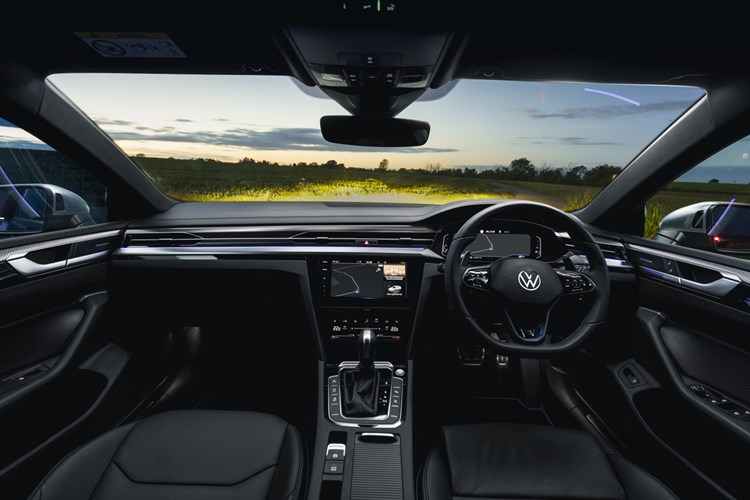
Depending on which model you choose, the infotainment system's buttons have been replaced by touchpads - and for those that have, it’s become more complicated, not easier. The steering wheel pads are less-than satisfying than the old buttons, too. It takes a long time to get used to, is too easy to accidentally change something when you’re twirling the wheel, and doesn’t make the digital instrument cluster any easier to tackle.
The touch controls on the ventilation dials, too, are a case of making things more difficult than they need to be; you can tap or slide the temperature controls and, while there’s an indent for it that allows your finger to know exactly what it’s pressing, you still have to spend just a little too long looking at where you’re pointing. That’s especially worrisome as the controls are mounted low down, just in front of the gear selector.
Of all its rivals, we'd say it's a better dashboard design than the divisive Peugeot 508, but less intuitive to use and stylish than the Mercedes-Benz CLA Shooting Brake or a BMW 3 Series Touring.
Practicality and luggage space
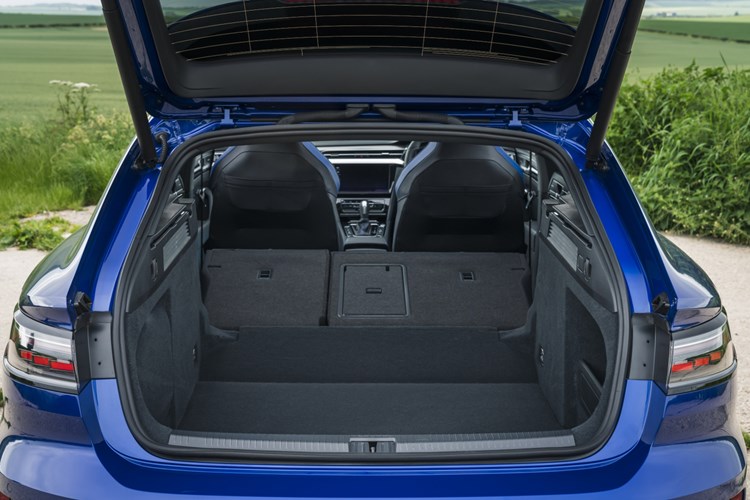
The regular Arteon is already a very practical car, space-wise, with the Shooting Brake version offering a negligible improvement for passengers. Rear space is still great, even for tall adults both in terms of head and legroom, and Volkwagen has added some neat details like small pockets in the rear seats for things like your phone.
The estate-shaped boot is 565-litres in volume – putting it roughly on par with the BMW 5 Series Touring, Audi A6 Avant and Volvo V90. It’s only two litres more volume than the Arteon fastback, but the difference comes if you fold the seats down – the Arteon Shooting Brake offers 1,632 litres compared to the Arteon hatch’s 1,557 litres. For reference, the Passat offers up to 1,780 litres with the seats folded.
Plug-in eHybrid versions do have a smaller boot because the hybrid battery is mounted under the boot floor, pushing it upwards. Even so, 455 litres with the seats up is still a useful amount of space.
So it's practical, good looking and roomy – as you'd expect, and what this tells you is just how impressive the standard Arteon is. As we said at the top of the review, choosing one Arteon or another really comes down to personal preference. Compared with the Passat it's based on though, it's not cheap, but paying a premium for style in this instance is probably justified.
What's it like to drive?
The 190hp 2.0-litre TSI petrol is arguably all the Arteon you’ll need. It's a punchy performer, refined at cruising, and happily delivered a 45.6mpg average over 600-miles of testing.
Although it's quiet and a consumate motorway cruiser, there’s a raspy growl to it when you want it that we really like. The engine note is a lot like a Golf GTI's, but when you don't want to push things, there's still a useful band of pulling power between 2,500rpm and 5,000rpm. What this means is that there's instant motorway acceleration and no problems from steep inclines.
The DSG automatic transmission is responsive from a standing start and shifts smoothly, even if you like to manually change gears with the steering wheel's paddle shifters. It’s programmed to avoid shifting down even under heavy throttle loads, instead using the engine’s torque to gain speed. A 0-62mph time of 7.6 seconds means it happily keeps up with the flow.
If company car tax is a consideration, it’s well worth considering the 1.4-litre TSI eHybrid. This posts an identical 7.6sec 0-62mph time but sits in a far lower BIK company car tax band. It’s not particularly rapid in electric only mode, with just enough oomph to keep up with traffic, but can kick the petrol engine into life after a brief hesitation and combines power sources smoothly. Economy depends entirely on how much running is done in electric mode, but over 50mpg isn’t too hard to achieve with infrequent charges.
At the top of the range is the 320hp four-wheel drive R. It uses the same running gear as the Golf R, but the bigger body does blunt performance slightly. It certainly launches hard off the line (0-62mph takes 4.9sec) and squirts past slower moving traffic with ease, but hot versions of the CLA Shooting Brake and 3 Series Touring feel even more rapid.
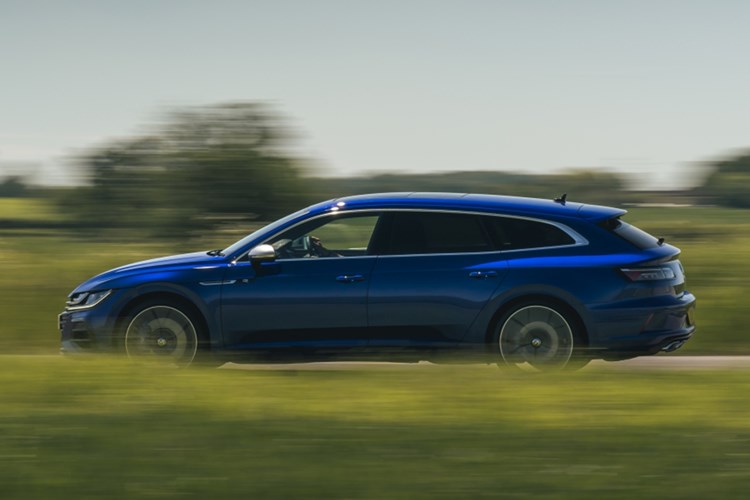
Handling
This is an excellent long-distance cruiser and is at its best on motorways. Along with ample soundproofing and low levels of wind noise, the Arteon feels planted on the motorway. On its large R-Line wheels and standard dampers it's not perfect, and although the high-speed ride is settled in town, on poorly-surfaced roads lumps and bumps can filter uncomfortably into the cabin.
Things improve if you’ve selected the DCC adaptive suspension (standard on the eHybrid and R) as it allows you to soften things off even more. It still fidgets a little over scruffy surfaces, especially on 19-inch and 20-inch wheels, while the softest modes to allow a bit too much float and wallow on undulating roads, though.
The driving position is excellent, although rearward visibility isn't great through the letterbox-like back window. All of the seats are supportive enough to have you shrug off several hours of driving without any hint of discomfort, with R versions proving even more figure hugging with a massage function, too.
There's little wrong with the handling of standard, although there's not much to inspire you either. Grip levels and overall body control are good, but it's lacking in the responsiveness you get from a Peugeot 508 SW. There’s a little bit of a delay between turning the steering wheel and the wheels reacting to your inputs, and there’s some bodyroll under hard cornering, but most drivers won't find it anything other than safe and grippy.
R versions four-wheel drive systems do add an extra layer of driver involvement, proving happy to send a dollop of power to the rear wheels to help tighten your line when exiting a corner. A 3 Series Touring is still a little more nimble, but the Arteon Shooting Brake R is exceedingly capable for such a big car and able to entertain a little when pushed hard.
What models and trims are available?
The Arteon Shooting Brake's range is straightforward, with three models and a range of petrol, diesel and plug-in hybrid engines to choose from. Model lines are the entry-level but well-equipped Elegance and sporty R-Line and hot R.
What else should I know?
We reckon its closest rival will be the Arteon fastback (or 'Gran Turismo' according to Volkswagen). Anyone looking at that stylish Volkswagen will clearly also consider this one - and it will come down to personal preference on styling as to which one you go for.
However the Arteon Shooting Brake will also be high on your list if you're looking for a stylish lifestyle-oriented five-door estate. You certainly have more options than you did a few years ago. The Mercedes-Benz CLA Shooting Brake and Peuegeot 508 SW are very similar in concept, and were joined in 2018 by the interesting Kia ProCeed Shooting Brake.
Detect a theme here? Given its pricing, we'd be remiss to point out that the Arteon is also up against our favourite mid-sized estate, the excellent BMW 3 Series Touring.
- Best family cars 2021
- Best estate cars 2021
Click through to see whether we recommend buying a Volkswagen Arteon Shooting Brake.
Should you buy one?
Yes, even though it's a hard car to recommend on purely rational grounds. We’re happy Volkswagen has made such a good-looking estate to try and counter the unremitting dullness of the Passat Estate. But you’re almost certainly buying the Shooting Brake for its looks – the boot is effectively no larger than the Arteon fastback with the rear seats in place, for starters.
And that's the thing. Given the straight choice between the Arteon 'Gran Turismo' (fastback coupe in non-marketing speak) and the Shooting Brake, we'll take the latter every day of the week. It might have little more room inside, but it's just a whole lot more desirable.
We're not keen on the Arteon's updated screen and controls – some of it works, some of it doesn’t quite hit the mark. It might get better with familiarity, but don't count on it. Where it really scores points in its ability to cover massive distances with ease. No doubt – the Arteon is a fantastic motorway cruiser, with an impressive ride even without adaptive damper trickery and a quiet petrol engine.
Which is the best Arteon Shooting Brake for you?
If you're buying it with your own money, the 190hp TSI petrol model is a brilliant all-rounder and a great combination of performance and economy. In our test period of this model, we easily achieved an average of 45mpg in mixed A-road and motorway driving, despite it being rapid and refined when you need more go.
But if you're a long-distance driver, and spend all day long in sixth gear, the 200hp TDI also looks to be a great option, with over 50mpg likely to be acheivable. As for the tax-efficient TSI eHybrid PHEV, it makes the most sense if you’re doing mostly short distances with frequent charges, but is surprisingly efficient on a longer trip, too.
The R is harder to recommend if you’ve got your sensible trousers on thanks to a list price that starts with a five and economy that’ll typically be in the low thirties unless you’re enjoying yourself. If you are using all 320hp, economy in the teens is easily achievable. However, if you're looking for a good-looking, smile inducingly quick, long-distance companion, and have outgrown a more traditional hot hatch, this one will be right up your street.
Is it as good as its premium rivals?
Yes, a BMW 5 Series Touring is better to drive, while the Volvo V90 and Audi A6 Avant all feel much more premium-feeling inside. But the Arteon is cheaper than all of those in cash terms and arguably better looking than the lot. As elegant and appealing as it is, if you're after the best estate car for the money on rational grounds, you still have to look at the more compact BMW 3 Series Touring first.
But if you're sold on its looks, the Arteon is a good car, and far more than a simple case of style over substance.
https://www.parkers.co.uk/volkswagen/arteon/shooting-brake/review/verdict/

